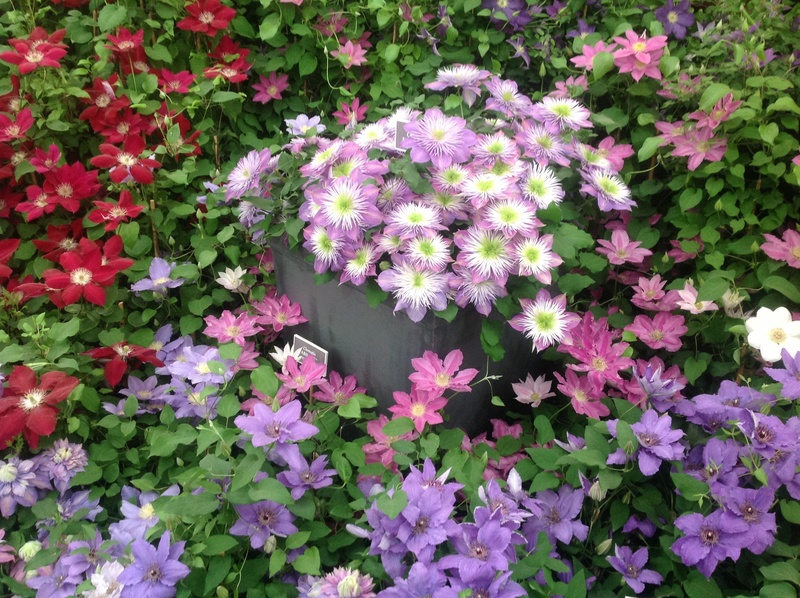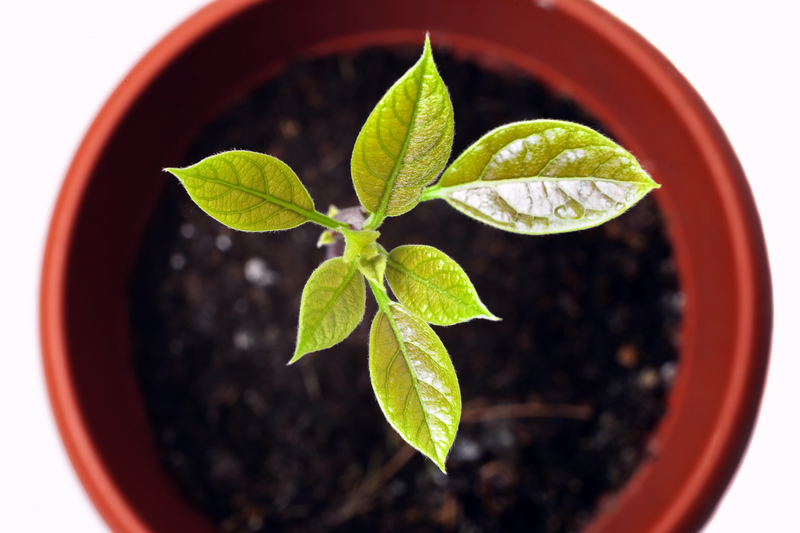Keeping Your Garden Plants Safe During Winter
Posted on 09/09/2025
Keeping Your Garden Plants Safe During Winter: The Ultimate Guide
As the days grow shorter and temperatures drop, every avid gardener faces the same challenge: keeping your garden plants safe during winter. Harsh frosts, biting winds, and fluctuating conditions can all pose threats to your treasured perennials, shrubs, and even hardy vegetables. But with the right winter plant protection strategies, you can ensure your garden emerges healthy and thriving when spring arrives. This comprehensive guide will explore tips, techniques, and expert insights for safeguarding all types of garden plants throughout the coldest months.

Understanding Winter's Threats to Your Garden Plants
Winter can be unpredictable, but the risks to plants are well-documented. It is crucial to understand what challenges your green friends face, including:
- Frost Damage: Sudden overnight temperature drops can rupture plant cells, leading to wilting and blackened foliage.
- Desiccation: Cold winds and dry air can pull moisture from leaves and stems, causing winter burn.
- Freeze-Thaw Cycles: Repeated melting and freezing can damage root systems and heave plants out of the ground.
- Heavy Snow: The weight of accumulated snow can break branches on delicate shrubs and young trees.
- Animal Damage: Rabbits, deer, and rodents may feed on bark or foliage when food is scarce.
Knowing what your plants face makes it easier to tailor the best winter protection methods for your garden.
Assessing Your Garden's Winter Risks
Before taking action, assess your garden's unique conditions. Ask yourself:
- What hardiness zone am I in?
- Which plants are the most vulnerable?
- Are there microclimates in my yard that could shelter or expose different plants?
Understanding your landscape's quirks is the first step in keeping your garden plants safe during winter.
Spotlight: Vulnerable Plants and How to Identify Them
- Tender Perennials: Like dahlias or cannas, these cannot survive freezing temperatures.
- Young Shrubs and Trees: Recently planted specimens have less established root systems and are more susceptible to freeze damage.
- Container Plants: Roots in pots can freeze much more quickly than those in-ground.
Essential Winter Protection Techniques
The right combination of techniques can make all the difference in protecting your garden plants from winter cold. Let's explore proven methods:
1. Mulching: A Thermal Blanket for Roots
Applying a thick layer of mulch is one of the simplest yet most effective ways to protect plant roots during winter.
- How it works: Mulch insulates the soil, reduces freeze-thaw cycles, and helps retain moisture.
- What to use: Straw, shredded leaves, pine needles, or wood chips all make excellent choices.
- How to apply: Spread 2-4 inches of mulch around the base of plants, extending at least a few inches beyond the root zone. Avoid direct contact with stems or trunks to prevent rot.
Don't forget to remove or thin your mulch in early spring to prevent fungal issues and let soil warm up.
2. Creating Barriers: Cloches, Row Covers, and Windbreaks
Physical barriers are invaluable for winterizing garden plants against frost and cold winds:
- Cloches: Individual glass or plastic covers safeguard small or delicate plants.
- Row Covers: Lightweight fabrics draped over plants prevent frost damage and allow light through.
- Burlap Screens: Use stakes and burlap to form windbreaks, protecting young shrubs or roses from winter burn.
Make sure covers are anchored securely and removed periodically during warmer spells to prevent overheating.
3. Watering Wisely Before Winter
Hydrated plants are hardier. In late autumn, before the ground freezes, water your garden thoroughly. Moist soil holds heat better than dry soil and helps prevent winter root damage. Avoid watering during freezing conditions to prevent ice formation.
4. Protecting Container Plants
Plants in containers are especially vulnerable to cold snaps. To keep potted plants safe during winter:
- Group pots together for extra insulation.
- Move containers close to a south-facing wall or into unheated garages or sheds.
- Wrap pots with bubble wrap or burlap to insulate roots.
Pots made of ceramic or clay can crack in freezing weather; consider storing them indoors or wrapping them thoroughly.
5. Pruning and Cleaning Up
Remove dead or diseased growth in late autumn. But avoid heavy pruning, which can stimulate new growth vulnerable to winter kill. Wait until spring for major pruning tasks.
- Clear fallen leaves and rotting debris: This prevents fungal diseases and limits overwintering pests.
Special Considerations for Different Plant Types
Evergreens
Evergreens lose water through their needles or leaves even in winter. Protect them by:
- Mulching deeply around the base.
- Wrapping with burlap if exposed to strong winter sun and wind.
- Watering well before freeze-up.
Roses
- Use a mound of mulch or compost at the base for insulation.
- Consider a wire frame stuffed with leaves as a wind barrier.
- Remove mulch in early spring to prevent rot.
Fruit Trees
- Wrap trunks with tree guards to prevent sunscald and rodent damage.
- Mulch heavily, but keep mulch away from direct trunk contact.
Tender Bulbs and Tubers
- Lift tender bulbs such as dahlias and gladiolus after the first frost.
- Store in a cool, dry, frost-free place until spring.
Perennial Flower Beds
- Leave some fallen foliage to protect crowns naturally, unless disease is present.
- Mulch heavily for insulation.
Troubleshooting Common Winter Problems
Frost Heaving
Repeated freezing and thawing can push shallow-rooted plants out of the soil, exposing roots:
- Apply a thick mulch layer to stabilize soil temperature.
- Check plants regularly and gently re-firm any that are lifted.
Winter Burn
Dry, windy conditions can desiccate evergreens:
- Use antidesiccant sprays on broadleaf evergreens.
- Provide burlap windbreaks for additional protection.
Rodent and Deer Damage
Mice, voles, and deer are notorious for feasting on bark and stems:
- Encircle young trees with hardware cloth or plastic guards.
- Clear away dense mulch or grass directly around trunks where rodents might shelter.
- Consider organic repellents or fencing for larger wildlife.
Planning Ahead: Setting Up for Next Winter
The best winter garden protection starts months before the cold arrives. Consider these proactive steps:
1. Choose Hardy Plants
When adding to your garden, select plants rated for your USDA Hardiness Zone. Native plants are naturally adapted to local winter conditions and require less intervention.
2. Site Selection
Plant vulnerable varieties in sheltered spots, such as near walls, fences, or under deciduous trees which provide some winter sun after leaf drop.
3. Improve Soil Drainage
Wet, poorly-draining soil can lead to root rot. Amend beds with compost and consider raised beds to keep roots healthier throughout winter.
4. Invest in Reusable Covers and Supplies
High-quality garden fleece, reusable cloches, and sturdy stakes can be used year after year for ongoing winter protection.

Frequently Asked Questions About Winter Plant Protection
Should I fertilize my plants before winter?
Avoid late-fall fertilization, which can stimulate new growth vulnerable to frost. Feed plants in early autumn or spring instead.
When is the right time to cover my garden plants for winter?
Wait until the first hard frost has occurred and plants are fully dormant. Covering too early can invite mold and rot.
How do I overwinter houseplants and tender tropicals?
Bring potted plants indoors before the first frost. Place in a bright, cool location and reduce watering to mimic winter dormancy.
Do I need to remove snow from branches?
Light, powdery snow acts as insulation. However, heavy, wet snow should be gently brushed off branches to prevent breakage.
Conclusion: Protecting Your Garden Plants All Winter Long
Keeping your garden plants safe during winter isn't just a challenge--it's a rewarding part of gardening that ensures the beauty and productivity of your garden year after year. By understanding the threats, adapting preventive techniques, and preparing ahead, you'll be able to protect even the most delicate flowers, shrubs, and trees from winter's worst. Remember: Every garden, climate, and plant species may call for slightly different approaches--but with attention, creativity, and care, your garden can survive and thrive, no matter how harsh the winter.
Don't let winter take you by surprise--implement these strategies now and enjoy a flourishing spring garden bursting with healthy, resilient plants!
- Mulch generously
- Use covers and windbreaks
- Protect from pests and animals
- Stay vigilant throughout the cold season
Have your own tried-and-true winter garden protection tips? Share your experiences and join the conversation in the comments below!

